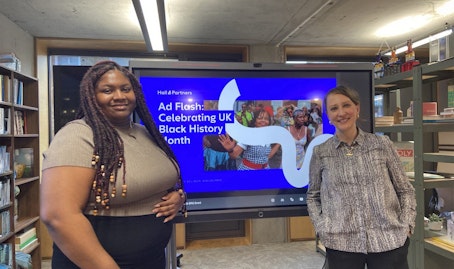Perspectives

At Brandwatch’s annual London conference Now You Know, Hall & Partners’ very own Chief Transformation Officer Richard Owen was invited to join a panel discussion about “Rethinking market research in a digital world”. Hosted by Brandwatch’s VP of Global Communications Vic Miller, Richard was joined by the impressive Diana Helander, Twitter’s Head of Marketing for Developer and Enterprise Solutions, The Body Shop’s Customer Strategy and Analytics Director, Jennifer Rice and H+K Strategies’ Senior Data & Analytics Manager Michael Maybury. Having strong perspectives from brands and agencies on the panel, key takeouts from the discussion included:
- Connected data: Reduce the over reliance on primary research and connect complimentary data such as social and search
- The rebirth of qualitative research: Despite the value and growth of data – this doesn’t get to the underlying human understanding behind the numbers. Hence qualitative is more valuable than ever
- Industry challenges : Critical thinking needs to be applied to use data as effectively as possible. Ask the question “Is this going to be impactful?”
1) Connected Data
In a world where social and search data are at our fingertips, allowing us to generate more insight faster than ever before, we shouldn’t get carried away. Richard Owen highlighted the importance of using a blended approach to research, data and strategy. While there is huge value in using traditional research in isolation, the real value comes when you complement different data streams with others. For example, while we can advise clients on their strategic approaches to branding and campaigns using social and search data, the emotion distilled from qual is invaluable. Reducing the reliance on any one dataset, and moving to a connected data approach is the most effective way to understand and build strong brands. Clients have access to a tremendous amount of data beyond anything that primary research could hope to collect, and we need to become masters of that.
“Connecting data allows us to distil the richest insights and give the most impactful recommendations to our clients.”
- Richard Owen, Hall & Partners
2) Qualitative research reborn
Qualitative helps us understand the “why”. Hence, in the age where we are increasingly gathering and distilling data, qualitative is having a rebirth. The Body Shop’s Jennifer Rice reinforced this idea:
“Nothing beats talking to people [but] combining this together with the data is really powerful”.
- Jennifer Rice, The Body Shop
The Body Shop recently used their findings to kit out their new Bond Street store with upcycled shelves, benches and refill stations, based on social listening and other data.
“We still need the human understanding of the why, overlaying the qual on our big social data,” explained Richard Owen. However, a blended research approach can only deliver its maximum value if there’s focus and intention from the start. Diana Helander was quick to point out the importance of defining what it is you want to measure or analyse, and why. The abundance of data at our fingertips requires focus to be picked and used effectively for an actionable result.
3) Is this going to be impactful
This is one of the major challenges the industry is facing right now. It’s key for us data savvy folk to educate our colleagues and teams to have a critical eye.
“Build the facility in the team to be critical of the information in front of you. Ensure what you’re seeing is not a false signal”
- Diana Helander, Twitter
Whether in-house or agency, we cannot fall into the trap of using data for the sake of data. Before choosing a dataset, we should have identified what questions we want the answers to first. Asking “Is this going to be impactful?” is a key question for every data driven marketer. And during the advent of artificial intelligence, we can benefit from that critical thinking because a skilled analyst understands the context of data, compared to machines which aren’t yet smart enough to grasp the bigger picture.
In summary, the panel raised some excellent points about the direction the industry needs to move to get the best insights. The key to success is to embrace multiple data sets and not rely on the ones we’ve traditionally built our businesses on. If we don’t start here we will never see the full picture or give our clients the right advice. But if we stop here, we’ll still fall short: our value is in our critical thinking about those datasets and using blended research and connected data approaches to unearth the human why behind the data what.








